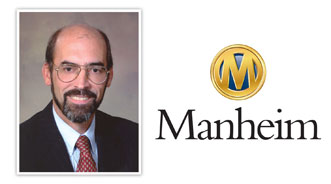Manheim Reports Wholesale Price Uptick in July

By subscribing, you agree to receive communications from Auto Remarketing and our partners in accordance with our Privacy Policy. We may share your information with select partners and sponsors who may contact you about their products and services. You may unsubscribe at any time.
ATLANTA –
Manheim determined wholesale used-vehicle prices (on a mix-, mileage- and seasonally adjusted basis) rose in July — the second straight monthly increase — a development chief economist Tom Webb said came “even in the face of higher supplies.”
Webb continued when Manheim released the latest Used Vehicle Value Index on Wednesday by saying, “Rack that up to strong dealer demand driven by many profitable used-vehicle retail opportunities and low new vehicle inventory levels for certain models.
“Given the ready availability of retail credit, we do not expect that dealer demand for wholesale units will ease up any time soon,” Webb went on to add. “However, it is still the general consensus that wholesale values will moderate in the latter part of the year.”
On a non-seasonally adjusted basis, Manheim determined prices actually fell between June and July. The index reading now stands at 120.9, a decline of only 0.2 percent from its year-ago level.
Pickup Prices Pull Back Modestly
While pickups constituted the only vehicle segment Manheim tracks monthly to post a price gain year-over-year, Webb indicated prices for these units actually softened a bit last month compared to June.
Subscribe to Auto Remarketing to stay informed and stay ahead.
By subscribing, you agree to receive communications from Auto Remarketing and our partners in accordance with our Privacy Policy. We may share your information with select partners and sponsors who may contact you about their products and services. You may unsubscribe at any time.
“Although pickups have easily been the strongest segment over the past year, they underperformed the market in July,” Webb said. “Increased supplies (a normal result of the recent surge in new pickup sales) are starting to work their way into the wholesale market, but there is still a shortage of late-model, low-mileage units.”
Manheim determined pickup prices in July actually moved 3.3 percent higher year-over-year. Prices for the other five segments sagged in July compared to a year earlier, including:
—Compact cars: down 1.9 percent
—Midsize cars: down 2.2 percent
—Luxury cars: down 0.3 percent
—CUVs/SUVs: down 0.5 percent
—Minivans: down 1.5 percent
Auction Prices for Rental Risk Units Remain Strong
Webb continued his monthly commentary by discussing the off-rental units passing down the lanes in July.
“Unadjusted prices for rental risk units sold at auction increased in July, whereas the normal seasonal pattern usually brings a decline,” he said.
“High prices were the result of a richer mix of vehicles being sold within market classes along with strong demand driven by the hot market for late-model used vehicles,” he added. “Retail CPO sales, for example, kept on their record pace in July.”
Recap of Used & New Sales Performance
Webb wrapped up his discussions by calling retail used vehicle profit opportunities “abundant.”
While Webb mentioned CNW Research information that showed retail used unit sales by dealers fell in July and the second quarter as a whole, “that’s not the vibe one gets from talking to dealers in the lanes.
“Clearly, we have a case of the strong, not only surviving, but prospering,” Webb continued.
In the second quarter, Webb noted same-store used retail unit volumes increased for the 16th consecutive quarter. And, the magnitude of the increase (up 13.2 percent) was the largest since the second quarter of 2010, a time when Webb insisted the comparisons were much easier.
“Their sales-weighted gross margin eased only slightly over the past year,” Webb said.
Meanwhile on the new-vehicle side, Webb surmised that sales are keeping inventories and incentives in check.
“With new-vehicle sales in June and July running at an annual rate of 15.9 million and 15.8 million, respectively, dealers have found themselves short of some models,” Webb said.
“This should minimize the threat of overly aggressive incentives, even though fights for market share remain very real,” he went on to say.
Continue the conversation with Auto Remarketing on both LinkedIn and Twitter.


